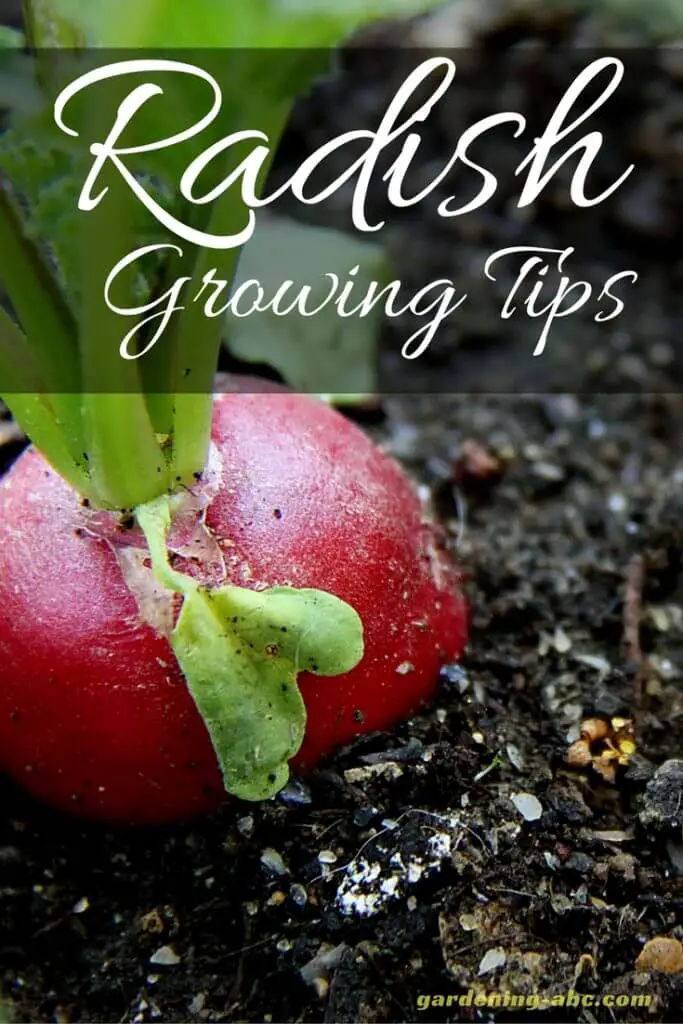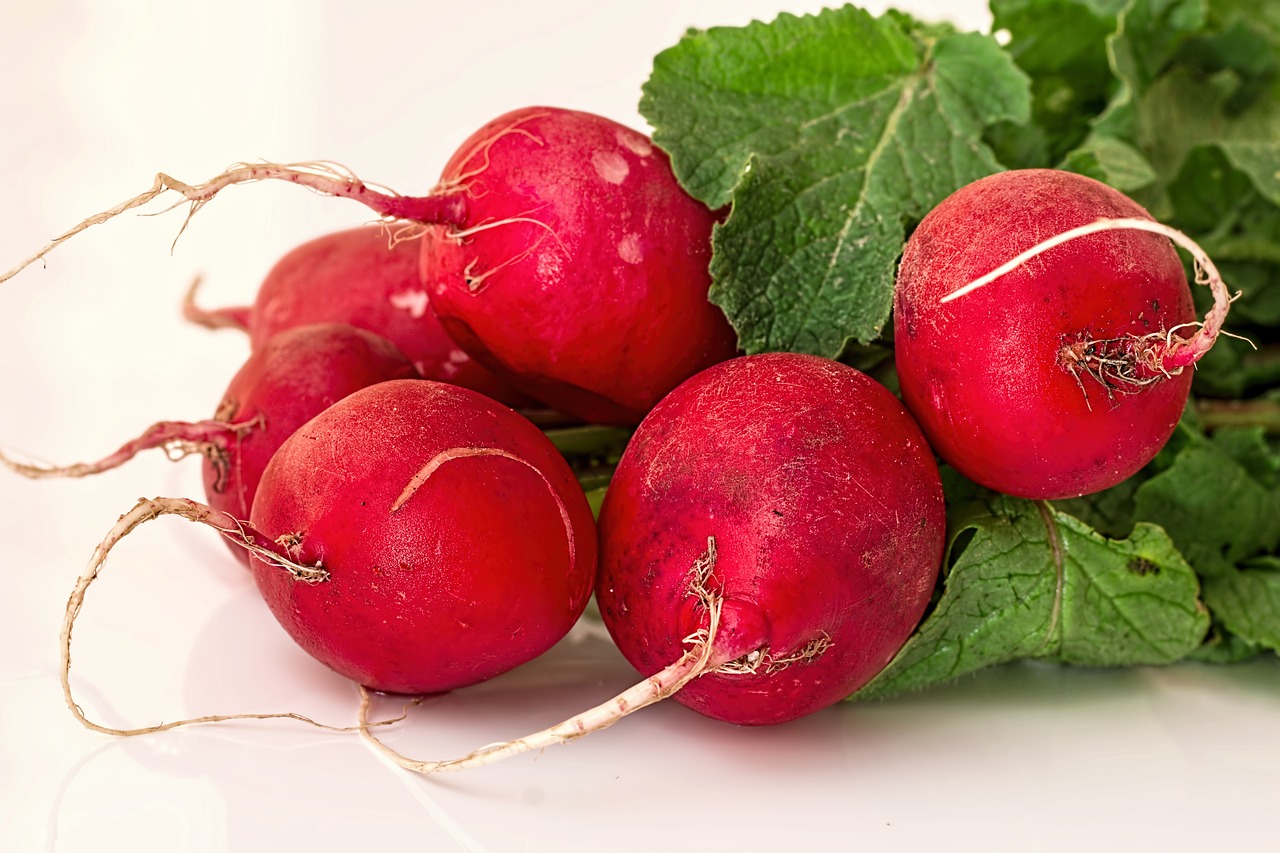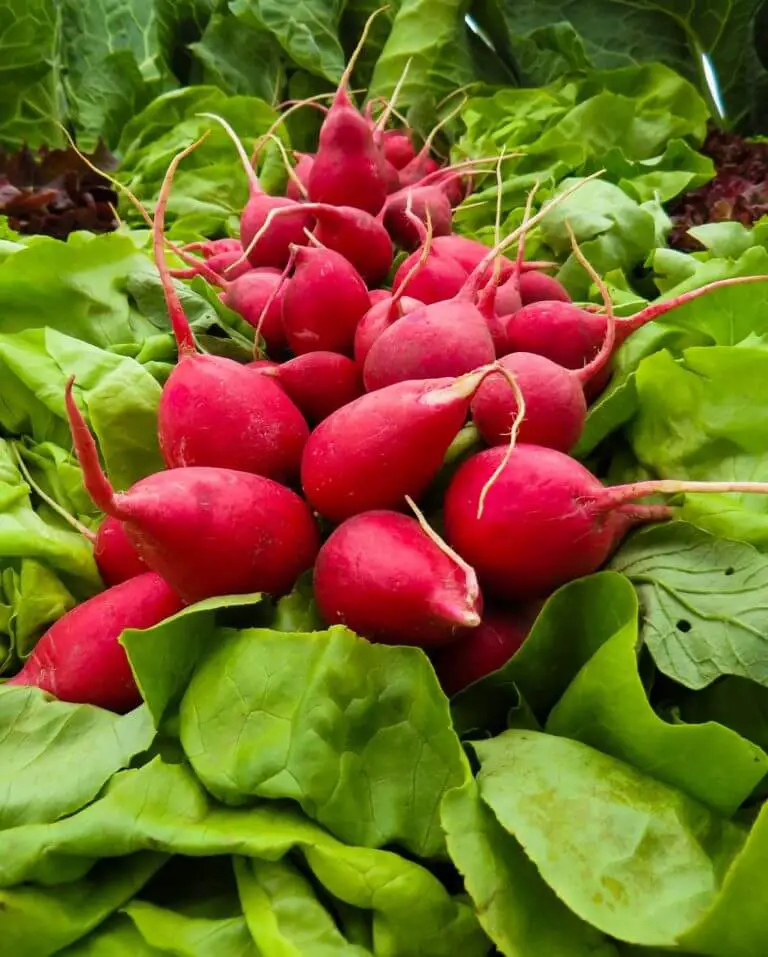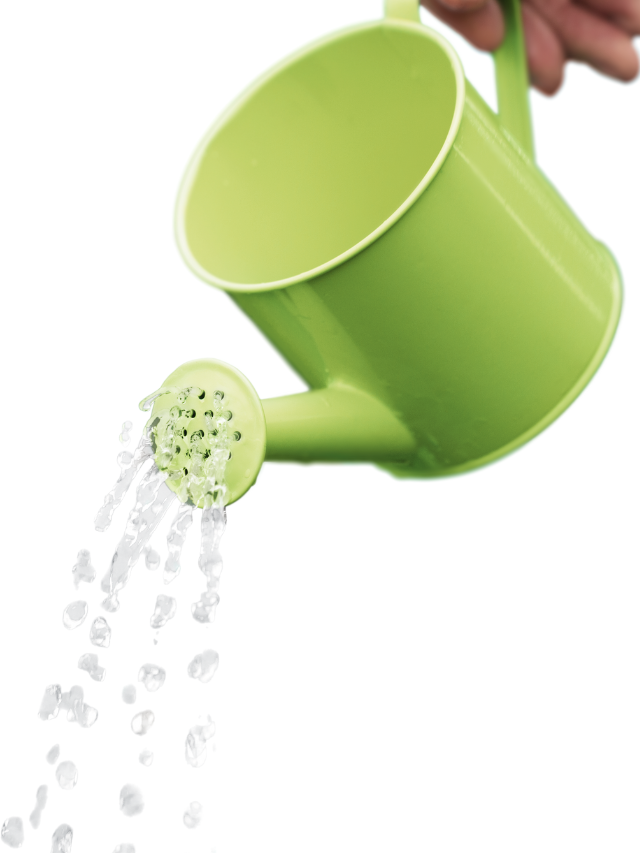We use affiliate links to run our site. When you buy through links on our site, we may earn an affiliate commission, without any added cost to you. Learn more
Are you looking to add some fresh, spicy radishes to your garden this season? If so, you’re in the right place!
Growing radishes at home is super easy and can be a fun and tasty way to get into gardening. Plus, who doesn’t love the satisfaction of plucking a juicy radish right out of the ground? Not only are they delicious, but homegrown radishes are also usually fresher and cheaper than store-bought ones.
They are also one of the quickest vegetables to grow from seed. In fact, some varieties will be ready to harvest in as little as 21 days after planting.
Growing radishes is a great way to get kids involved with gardening. Kids love watching their gardens grow and harvesting their own food – so why not try planting some radishes together?
Whether you’re a seasoned green thumb or just starting out on your gardening journey, radishes are a great choice.
In this blog, we will outline the steps for successfully growing radishes at home. From selecting the right variety and preparing the soil to plant, caring for, and harvesting your radishes, we’ve got you covered.
So grab your gardening gloves and let’s get started!
Choosing the right type of radish:
Before you choose the perfect radishes for your garden, you need to consider a few things.
First off, think about your climate and the time of year you want to plant. Radishes are a cool season crop, so they do best in spring and fall when it’s not too hot out. If you live in a warmer climate, you might have better luck planting in the winter.
Next, check out the different types of radishes available.
There are so many to choose from! Round red radishes are the classic choice and have a nice spicy kick. You can also go for long white radishes, also known as daikon. They are a bit milder and super versatile in the kitchen.
Check out Red Radish Vs White Radish for more information.
And if you want something a little different, try black radishes. They’re a bit more bitter but still tasty.
Also, think about how you plan on using the radishes. Do you want to use them for salads or cooking? Because it can change which radish will you choose as your final harvest.
And finally, consider your own personal preference. Do you like spicy or mild radishes? Do you want something traditional or something a little out of the ordinary? There’s a radish for everyone!
No matter which type you choose, make sure to pick a variety that will thrive in your garden’s soil conditions.
Ideal Light Conditions:
Radishes need plenty of sunlight to grow properly. You should always plant radishes in an area that gets at least 6 hours of direct sunlight per day.
In areas with hot summers, provide some shade during the hottest part of the day. It will prevent the soil from drying out too quickly.
You can also use containers on a sunny patio or balcony to grow radishes, as long as they receive enough sunlight. Needless to say, your container should have drainage holes and a well-draining soil mix to prevent the roots from sitting in water.
Preparing the soil:
Radishes prefer well-draining soil that is rich in organic matter. They do not tolerate wet or soggy conditions, so make sure you have soil that drains well.
Radishes also prefer slightly acidic soil with a pH of 6.0 to 6.8. If your current soil pH is not in that range you can easily amend it.
So when preparing the soil for planting radishes, you need to take all these into account. Here are some tips for preparing the ideal growing soil for radishes:
- Test the drainage: The first step in preparing the soil is to ensure that it drains well. You can do this by filling a hole with water and observing how long it takes to drain. If the water drains within a few hours, the soil has good drainage. If it takes longer, you may need to make some adjustments.
- Add organic matter: Adding compost or well-rotted manure to the soil can help improve its structure and drainage. This will also help to add nutrients to the soil, which will benefit the radishes as they grow. You can also add coco coir, or perlite along with soil to increase its drainage capacity. Here is a list of different soil additives you can use.
- Adjust the pH: If your soil falls outside of the ideal pH range, you can amend the soil either by increasing the pH or by decreasing pH.
- Remove weeds: Be sure to remove any weeds from the area where you plan to plant the radishes. Weeds can compete with radishes for nutrients and water, which may hinder their growth.
Don’t forget to loosen the soil with a garden fork or tiller to allow the roots to grow easily.
Planting radishes
Radishes are a cool-season crop, so they thrive in spring and fall when temperatures are cooler. Keep this in mind while planting radishes in the garden. If you live in warmer climates, it is best to plant them in the winter.
Sow the seeds directly in the ground. Unlike many other vegetables, you can plant radish seeds directly in the ground.
To plant the seeds, make a small indentation in the soil with your finger and place the seeds in the hole. Cover the seeds with soil and gently pat them down.
Sow the seeds about 1/4 inch deep and about 1 inch apart. If you are planting radishes in rows keep a gap of 6 inches between the two rows.
After that, water the seeds gently to help them settle into the soil.
Thin the seedlings. Once the radish seedlings have sprouted and grown a few inches tall, thin them out. Ideally, a gap of 2 inches is perfect for growing radishes.
Gently cut the excess seedlings at the soil level, being careful not to damage the roots of the remaining plants. This will allow the seedlings room to grow and prevent overcrowding.
Caring for radishes:
Caring for radishes is an important part of ensuring a successful crop. Here’s what you need to know when it comes to taking care of your radish plants:
Watering:
Proper watering is essential for growing healthy radishes. Here are some tips for watering radishes:
- Water the radishes regularly: Radishes need consistent moisture to grow properly, so be sure to water them regularly, especially during dry spells. But keep this in mind, while radishes do need moisture, they do not tolerate wet or soggy conditions. Avoid overwatering the plants, as this can lead to problems like root rot.
- Avoid getting the leaves wet: Wet leaves can encourage the development of fungal diseases. To avoid getting the leaves wet, always water the radishes at the base of the plant.
- Water in the morning: Watering the radishes in the morning allows the foliage to dry out before evening, which can help prevent the development of fungal diseases.
- Use a watering can or soaker hose: A watering can with a fine rose or a soaker hose can help ensure that the water is delivered directly to the roots of the plants.
- Use mulch: Add a layer of mulch around the radishes. It will help suppress weed growth, retain moisture in the soil and reduce the need for frequent watering.
Fertilizing radishes:
Radishes are not heavy feeders and do not require a lot of fertilizer to grow well. However, you can always add a little bit of fertilizer which can help the plants grow more vigorously and produce larger healthier roots.
Here are some tips for fertilizing radishes:
- Use a balanced fertilizer: A balanced fertilizer, such as a 10-10-10 formula, will provide the radishes with a variety of nutrients. Always follow the instructions on the fertilizer package.
- Radishes do not need a lot of fertilizer, so be sure to use it sparingly. Over-fertilizing can lead to excess foliage and smaller, less flavorful roots, or can lead to problems like leaf burn and reduced yields.
- It is best to fertilize radishes when they are young, as this will give them the nutrients they need to grow and develop properly.
- After fertilizing the radishes, be sure to water them to help the nutrients reach the roots.
Radish As a companion plant:
Radishes are not particularly prone to diseases, but they can be beneficial companion plants for other crops.
Planting radishes alongside cucumbers or squash can help to reduce the number of beetles that attack these plants. Radishes can also attract leaf bugs away from spinach.
Here are a few examples of plants that grow well with radishes:
- Lettuce: Radishes and lettuce are often grown together in the same bed, as they have similar growing requirements and can be harvested at the same time.
- Carrots: Radishes and carrots have a symbiotic relationship, as the radishes can help to loosen the soil and make it easier for the carrots to grow.
- Onions: Planting radishes with onions can help to deter pests like root maggots, which can damage both plants.
- Peas: Radishes and peas can be grown together, as the radishes will mature and be harvested before the peas need space.
Common pests and diseases:
There are very few pests and diseases that actually attack radishes and can impact their growth and yield. Here are some common problems that can affect radish plants, along with ways to prevent them:
Aphids:
Aphids are small, pear-shaped insects that feed on the sap of radish plants. They can weaken the plants and make them more susceptible to other problems.
To prevent aphids, try planting radishes near herbs or plants that attract predatory insects, such as ladybugs. You can also use an insecticidal soap or neem oil to control aphids.
Root maggots:
Root maggots are small, white insects that lay their eggs on the roots of radish plants. The larvae that hatch from these eggs can damage the roots and make it difficult for the plants to absorb water and nutrients.
To prevent root maggots, try planting radishes with a companion plant, such as onions, which can help deter the insects. You can also use row covers or pest barriers to keep the insects away from the plants.
Flea beetles:
These small, black beetles can chew holes in the radish leaves, causing them to become damaged and unhealthy.
To prevent flea beetles, try using a floating row cover or insect netting over the plants.
Clubroot:
Clubroot is a soil-borne disease that causes the roots of radish plants to become distorted and malformed. It can be difficult to control and can seriously impact your radish crop.
To prevent clubroot, practice crop rotation and avoid planting radishes in areas where the disease has previously been present.
Another potential issue with radishes is the presence of larvae that attack the roots. Crop rotation can help to prevent this problem, as can adding wood ash to the soil.
By taking steps to prevent these pests and diseases, you can help ensure that your radish plants grow and thrive.
Harvesting radishes:
The best part of radish as far as beginners are concerned is that it matures very quickly. You can harvest your radishes within 3 to 4 weeks depending on the species.
In case you are unsure of its size, pull it out from the soil in case you find the radish is still immature, you can always replant it. It is always better to pull out a little immature radish than to take out over-matured. Oversize radishes can taste woody and unpleasant to the tongue.
Storing radish:
Before storing the radishes, cut off the greens and discard them. The greens can draw moisture away from the roots, causing them to wilt faster.
Place the radishes in a plastic bag and store them in the refrigerator. They will keep for several days this way.
Here is one little trick that I found on Olga Massov’s site You can soak radishes in ice water prior to storing them. Doing this for a few hours before storing them can help to keep them crisp and fresh.
Conclusion:
Growing radish at home is an easy and rewarding task. You will be able to enjoy the freshness of homegrown radish in your salads and dishes.
Radishes require minimal care, a bit of sun, and regular watering to grow properly. Pay attention to soil pH, planting depth, and spacing when planting your radishes for the best results.
Now that you know the basics of growing radish at home, you can go ahead and give it a try! You’ll be surprised at how easy and satisfying it is to grow your own food.
I hope this post was helpful to you. You can read more about radishes and other easy-to-grow garden veggies here on this page.
If this information helped you feel free to share it with others too.

Amazon and the Amazon logo are trademarks of Amazon.com, Inc, or its affiliates.




Nice and useful write up !!!
U have very good write ups that make it simple for beginners I’ve shared these with many beginners and they have good crops I too have got good tips on plants I’ve never grown before but every year I try a new plant to see how it will grow love your site